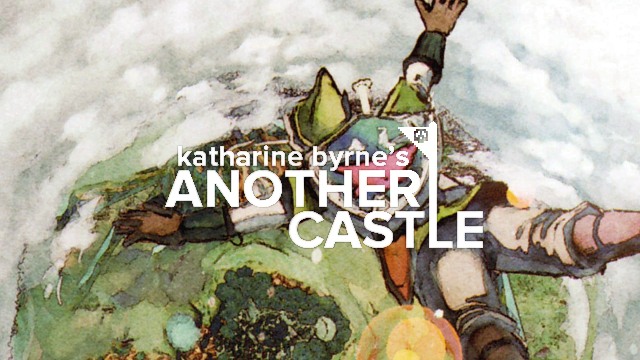
If I were to describe one of my most lasting memories of The Legend of Zelda: Skyward Sword, it wouldn’t be the beautiful watercolour art style or the exquisite Motion Plus combat. It wouldn’t be the soaring music or the crafty dungeons either. It wouldn’t even be the somewhat lacklustre story. Nope– as much as I love all those things (except maybe the latter), my lasting memory of Skyward Sword comes courtesy of Gorko the Goron. You know, that crazy archaeologist Goron who keeps bumping into you and is absolutely obsessed with all things Skyloft. That Gorko. You meet him fairly early on in the game when you first touch down in Faron Woods, and he’s being harassed by a gang of moblins. At first it seems like your only reward for saving him is a rather long-winded explanation about what those curious bird statues you’ve seen all over the place might be for, but then, my friends, he says this:
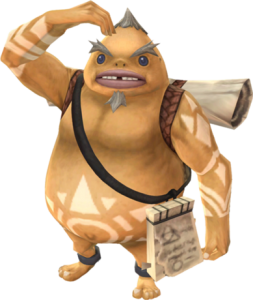
“So get this: people actually live on this sky island, and they get around by flying on the backs of huge birds that are way bigger than birds down here! Up there everyone reveres the goddess, and the residents of all the islands in the sky live in a perfect society, totally free of conflict or unhappiness!”
“Not only that, but from what I can tell, their civilisation is way, way more advanced than ours down here. But it does not even stop there, bud! This Isle of the Goddess has even more stuff to marvel at! The place was crafted by the goddess herself, so it figures that it is filled with wonders we do not have here.
“The buildings are all made of gold! An endless spring of mystical water feeds a river through the place. One sip of that stuff, and you’ll live forever! The trees are heavy with plump fruit that cures all disease! The fields are crowded with pumpkins that never rot! Magic wildflowers bloom everywhere! And the weather. Oh, the weather, bud! Not too hot, not too cold. No chance of sweaty heat in this garden paradise! That is the Isle of the Goddess… Amazing, right? WRONG. IT IS BEYOND AMAZING! You want to hear more about it, don’t you, bud?”
Unfortunately, that’s all he’s got to tell us about this wonderful “Isle of the Goddess” for now, but when I first read these words, my eyes lit up because what Gorko’s just described is a utopia, and utopian fiction is one of my favourite genres of literature. I just love reading about how different authors think the way the world should work, but I also find the word itself to be quite interesting too. First coined by Sir Thomas More in 1516 when he published his book, Utopia (or Concerning the Best State of a Commonwealth and the New Island of Utopia to give it its full title), it’s derived from the Greek “Eutopia”, meaning “good place”. However, it also has a cunning double meaning, as another Greek word “Outopia” also means “no place”, suggesting that such societies could never, in fact, exist in the first place.
You’ve probably also come across some utopian fiction yourself. Plato’s The Republic, Francis Bacon’s New Atlantis and Edward Bellamy’s Looking Backwards: 2000-1887 were all hugely influential in creating this genre, but the thing that really fascinates me about these supposedly ideal societies is when that “no place” notion starts to creep in and they suddenly become dystopias instead– a “dystopia” being the extreme opposite of a utopia where everything is at its absolute worst– and it’s novels like Aldous Huxley’s A Brave New World, George Orwell’s 1984, Margaret Atwood’s The Handmaid’s Tale and Kazuo Ishiguro’s Never Let Me Go (and, you know, The Hunger Games) that really get my inner literary nerd fired up.
But where does this leave Skyloft? Well, the real reason why Gorko’s words lodged themselves in my brain is because I think we all know that Skyloft is anything but a utopia. Of course, it’s hardly on the same scale as Orwell’s Big Brother or Atwood’s Gilead, but compared to The Surface, I think it edges much closer into dystopian territory than we (and Gorko) might realise, and it’s this tension between Gorko’s perceived notion of Skyloft and its in-game reality that I’d like to discuss today.
Let’s start by trying to unpack some of Gorko’s ideas and seeing how they compare to the real Skyloft. He starts by saying Skyloft is a “perfect society free from conflict and unhappiness”, yet we all know from the game’s opening scenes that this definitely isn’t the case. Not only is there rampant bullying going on thanks to Groose and his cronies, but Skyloft’s also home to (and I quote) “blood-sucking monsters” that reside in Waterfall Cave. Moreover, it may be the ideal village during the day, but at night it’s a place where no one goes outside without good reason. Remlits, Keese and ChuChus all come out in force once the sun goes down, and without wanting to sound overly dramatic, the residents of Skyloft are effectively trapped in their own homes as these monsters roam the streets outside. Granted, this is mostly down to the demon Batraeux and his unfortunate evil aura drawing them all here in the first place, but it’s a bit unsettling that everyone seems to be perfectly content with the idea of being prisoners in their own homes rather than trying to do something about it.
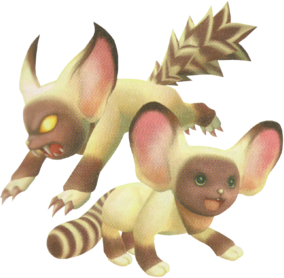 And those homes certainly aren’t “made of gold”, either. In fact, these often single room dwellings are perhaps the biggest sign of Skyloft’s inherent poverty. Brother and sister and parent and child alike must all share the same living space, often with no privacy, or indeed visible indoor plumbing. No wonder the bathroom at the Knight Academy is always occupied… it’s the only one in the entire village! So much for their civilisation being “way, way more advanced” than what’s down on The Surface then.
And those homes certainly aren’t “made of gold”, either. In fact, these often single room dwellings are perhaps the biggest sign of Skyloft’s inherent poverty. Brother and sister and parent and child alike must all share the same living space, often with no privacy, or indeed visible indoor plumbing. No wonder the bathroom at the Knight Academy is always occupied… it’s the only one in the entire village! So much for their civilisation being “way, way more advanced” than what’s down on The Surface then.
All joking aside, though, Gorko’s belief about the immortal qualities of Skyloft’s “endless spring of mystical water” (how does that work, anyway!?) also doesn’t ring true, as once again Skyward Sword fails to answer that age-old conundrum concerning the whereabouts of Link’s parents.
It’s hard to believe that Skyloft has a particularly low life-expectancy when there aren’t any physical signs of decay or disease (except for that tiny problem of falling off the edge if a rescue knight’s not around), but it’s not just Link’s parents who are mysteriously absent this time either. What about Zelda’s mother? And where are Groose’s parents as well for that matter? Pipit’s dad is missing too, and Karane doesn’t seem to have any family either. When you think about it, the only complete families that live in Skyloft are Bertie and Luv, the Potion Shop owners, and Wryna and Jakamar, whose young daughter Kukiel befriends Batreaux, and even they go through some pretty tough patches during the course of the game– Bertie’s worked to exhaustion caring for his young baby, while Kukiel’s parents are worried sick when their daughter goes missing. Everyone else either lives by themselves, or only has a single parent living with them. Not that there’s anything wrong with that, of course (maybe it was something to do with their exclusive diet of “pumpkins that never rot”), but it’s not like there’s anywhere else to fly off to either, making their absence all the more disquieting (almost a little Stepford Wives-esque) given the town’s incredibly sunny disposition.
There’s also a worrying amount of holes in the general population too, casting doubt over Skyloft’s long-term survival. There really aren’t that many children knocking about when you look at everyone living there, and the vast majority of Skyloft’s inhabitants all seem to be middle-aged and upwards, leaving a rather ageing society. Likewise, if we look at our knights-in-training, for example, the only other eligible young lady apart from Zelda that the guys can hope to settle down with is Karane, and she’s already semi-taken by Pipit. That’s not really great odds for the men of Skyloft when all’s said and done, and it doesn’t exactly bode well for future generations either.
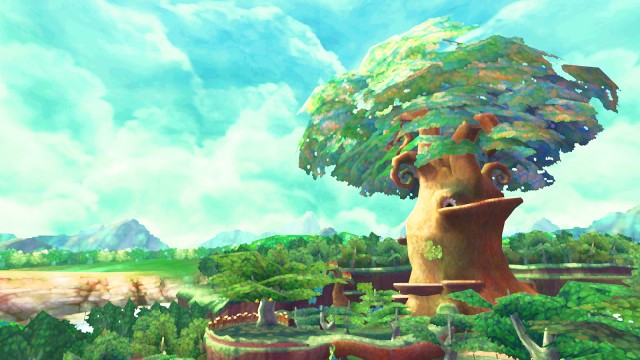
Faron Woods, on the other hand, is a much better place to start a kingdom.
Okay, so perhaps I’m being a bit too literal about all of this, but for all his research and extensive travel, I think Gorko’s missing what’s right in front of his eyes– namely that The Surface is actually much nearer to his utopian dream than anywhere else. Interestingly, the game seems almost determined to paint the opposite picture– Zelda’s father, Gaepora, calls The Surface a “forsaken place”, and Fi says that Link will need to use the Goddess Sword to “resurrect” the land below when he first discovers his destiny– but we soon discover that there’s a much richer and more diverse landscape to this fledgling Hyrule than anything we’d find in The Sky. Gorko may not have discovered any golden buildings yet, but from the moment Link sets foot in Faron Woods to the moment he leaves the far reaches of Lanayru Desert’s sand sea behind, the Surface proves itself to be a world positively brimming with life. So much life, in fact, that the small and fragmented archipelago of sky islands feel almost stale and barren by comparison– it should be them getting resurrected, not the Surface down below. Likewise, even if you discount all the monsters, there’s also a much greater variety of races on the Surface too, such as the subterranean Mogma tribe, the water-dwelling Parella, the woodland Kikwis, the Sheikah, and, of course, the Gorons.
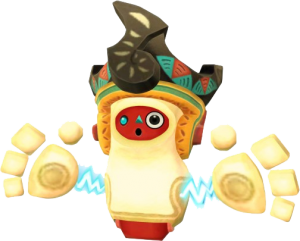 Similarly, despite having died out, the Ancient Robots in Lanayru Desert are also hands down the most technologically advanced race in the game, if not the entire series. They could certainly give the Oocca from Twilight Princess a run for their money, and the Timeshift Stones are easily one of the most amazing and mind-boggling pieces of technology that Link’s ever had the pleasure of appropriating.
Similarly, despite having died out, the Ancient Robots in Lanayru Desert are also hands down the most technologically advanced race in the game, if not the entire series. They could certainly give the Oocca from Twilight Princess a run for their money, and the Timeshift Stones are easily one of the most amazing and mind-boggling pieces of technology that Link’s ever had the pleasure of appropriating.
Of course, it’s arguable that the people of Skyloft never had any need for inventions like the Timeshift Stones or the Clawshot or the Gustbellows (except maybe Pipit’s mother), but this line of thinking reminds me of the Eloi from H. G. Wells’ novella, The Time Machine.
This future vision of mankind also live in a kind of utopia– they’ve evolved past the need for labour, strength or intelligence as they’ve already conquered the world around them, and they generally spend their days eating, playing, and procreating. At the same time, however, the Eloi are so ineffectual and lackadaisical that they’ve lost all of mankind’s curiosity and inquisitiveness, and they even let the light-fearing Morlocks devour their neighbours in the night without even batting an eyelid. They’ve evolved into their own worst nightmare, and while Skyloft doesn’t have quite the same problem (yet), it’s foreseeable that its residents could fall into the same trap. There’s no direct threat to their survival, after all (except the monsters who come out at night), and they’ve effectively “conquered” the landscape around them as well, so to speak. But when Zelda professes she doesn’t know what’s below the cloud barrier at the beginning of the game, you’ve got to wonder just how far the knowledge of the Hylians has disintegrated:
“Some say that it’s an empty, barren place, or even that there’s nothing at all down below,” says Zelda. “But I just have this feeling that they’re wrong.”
She goes on to say that some of her father’s old texts talk about a place called The Surface, describing a whole world down there that’s much bigger than Skyloft, but since no one’s ever been down there to see it, no one can say for sure whether it really exists. Thankfully, Zelda’s curiosity is very much in tact when it comes to The Surface, but for most people it seems like it’s just another thing that’s passed into legend. The existence of an island in the sky, on the other hand, has been kept very much alive down on the ground (even though Gorko’s findings aren’t entirely accurate).
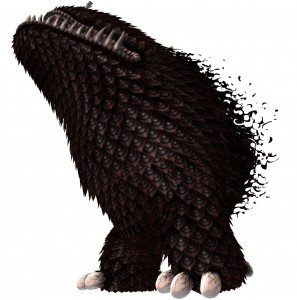 Of course, The Surface isn’t all sunshine and roses either– there’s the whole Demon Lord Ghirahim trying to resurrect Demise problem; there aren’t any life-giving rivers, disease-curing fruit or fields full of pumpkins that never rot; and it certainly isn’t free from conflict and suffering– but despite all that, I think I know where I’d rather pitch my tent. Besides, let’s not forget that a utopia’s also a “no place” after all, so perhaps neither Surface nor Sky can ever truly fit the bill.
Of course, The Surface isn’t all sunshine and roses either– there’s the whole Demon Lord Ghirahim trying to resurrect Demise problem; there aren’t any life-giving rivers, disease-curing fruit or fields full of pumpkins that never rot; and it certainly isn’t free from conflict and suffering– but despite all that, I think I know where I’d rather pitch my tent. Besides, let’s not forget that a utopia’s also a “no place” after all, so perhaps neither Surface nor Sky can ever truly fit the bill.
Nevertheless, I think it’s interesting that Skyward Sword makes a point about trying to pigeon-hole each environment when neither of them end up conforming to such self-imposed labels in the first place. It makes me wonder whether Hylia was really saving anyone when she created Skyloft, or whether she was really condemning the Hylians to a life of ignorance and isolation. In a way, it almost echoes what happened in Ocarina of Time when Link was sealed away for seven years. It was good in that it gave Link a chance to defeat Ganondorf, but it was awful for those who had to endure his siege and the near-annihilation of their own race. It also speaks volumes about the role that legends play in the series more generally, and how easily they can become lost or exaggerated. Are we really playing the same legend over and over again? Is there even a proper timeline? Hyrule Historia might say there is, but you just never know. Either way, it’s topics like these that keep the discussion going, and that’s why we’re all here at the end of the day, right?
That said, the question I’m asking myself now is “why do so many games have floating islands and decaying planets in them these days?” That question, however, is for another day. Until next time!




 ShareThis
ShareThis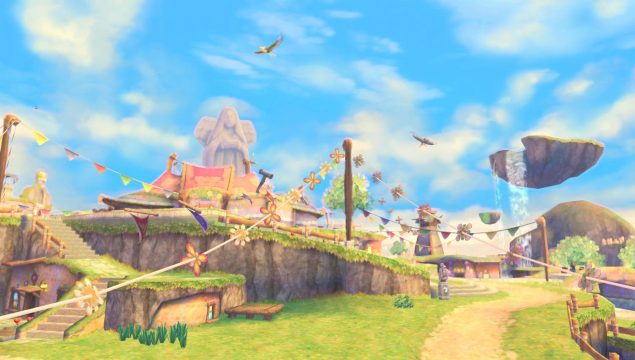








In Defense of Skyloft
In defense of the Isle of the Goddess, it is free of true war, and seems like a generally enjoyable place to live in.
The points made in this article are genuine, if perhaps overdone. The supposed “rampant bullying” of Groose and his cronies seems only to spread to Link the most.
These males may be missing because they are busy guarding, or got lost on the surface below.
Kids, in their daring and foolishness, may have thought it a good idea to try and reach the surface.
Though, the statement that impregnating the females of Skyloft may be unsuccessful due to the number, there are several cases of persons marrying those up to 20 years older then themselves. Though it is inappropriate for a kid’s game, I am speaking in terms of “In defense of Skyloft” not “It’s a kids game.”
Then, males may impregnate the females multiple times. The oldest woman in recorded history to ever give birth was, approximately, 66. The age of the male in question to impregnate her is of no consequence.
While the citizens could do some pest work, could have some more citizens, and could more effectively use the Skyworld they have to create a network, it is not utopia, but nor is it dystopia, or a completely miserable place.
To say it’s perfect would be to lie. To say everything has a flaw is to lie. To say it is flawed, peaceful, and fairly nice, (as well as vacation heaven) would be to tell the truth.
And another thing. You sleep at night.
Hey, there. Great article! You really know your stuff. Very well researched and presented.
Ultimately, I would most agree with your concession of possibly interpreting things “too literally.” But, that’s hardly a damning offense of the article as a whole. Unfortunately, I just don’t think you need to concern yourself with the lack of bathrooms or potential for procreation.
At the end of the day, these are just small indications that it is, in fact, still merely a video game. I mean, where would it end, right? We don’t concern ourselves with the fact that video game characters wear the same clothes every day or never stop to eat unless they are eating to replenish health in which case they never get full =P
But, hey, don’t get me wrong. If it sounds like I’m criticizing you for taking narrative to the Nth degree I only feel I can do so as someone who constantly takes it to the N-1th degree =)
I write the fledgling “The Plot Thickens” (TPT) feature over on NegativeWorld.org so, yea, I can greatly appreciate all your effort and focus.
As it happens, I just beat Skyward Sword for the first time about 5 hours ago!! I found it to be my favorite Zelda game to date – no small feat!
I plan to make my next TPT installment focused on the Zelda timeline. Spoiler alert: I don’t think there is a real timeline! Regardless of what the Hyrule Historia tries to say.
Inordinately,true. In the end it is a video game. Skyward Sword is a fun game – I haven’t had the fortune of playing it, but I certainly want to.
I’ll be looking at The Plot Thickens at Negative World, so do look forward to my comments, yes?
But of course!
Thanks for the kind words, NinSage! I agree that it’s indeed only a video game – hence my concession about being a bit too literal and the joke about the only bathroom! – but at the same time, I don’t think that should necessarily disqualify it from a proper discussion about how it’s trying to present itself.
To me at least, books are never ‘just’ books, and films are never ‘just’ films – nine times out of ten they’re always trying to get at something deeper – so I don’t see why we should treat games any differently :) Of course, I don’t mean to criticise your point of view – far from it. This is just me trying to explain where I’m coming from when I write this column. But thanks so much for reading and commenting. It’s always encouraging to see readers’ thoughts!
Truly. I know I was focusing on my biggest criticism, but really, I am always looking for the deeper meanings in games. It’s fun, and, a lot of times I think there is something there. Perhaps more often than in, say, big films that are only going for a Hollywood box office buck.
Anyway, looking forward to reading more of your awesome work in the future!
Very interesting column you have. Informative, but without too many spoilers.
It’s excellent, basically.
Thanks Hawthorn! :) Glad to know you enjoy it.
I agree with you on it seeming odd that there were so few people in Skyloft. Considering how long they have supposedly been floating up in the cloudsm you would think there would have been more people. I mean, a game like this doesn’t have to cover every base, but if you think about it, it seems kind of ridiculous.
I’m trying to decide if the “Rule of Fun” is affecting all of this, but I can’t manage to piece these missing pieces together with the idea. I mean, one little farm with some wheat growing could have solved the problem of food, considering how few people live on the island.
Do they eat Remlits, or just pumpkin soup all day?
And even if all they eat is soup, that can’t be healthy for them. I assume Luv gets her potion ingredients from Strich. Do they eat bugs for food?! Even just a little side island reached by a rope bridge that grows the foodstuff for the town would have been good.
I think these little details would have made for a better atmosphere, or at lest maybe a little more to explore.
It makes me wonder if they are dying off. Now that would add some tension to the story. A hero races to save his dying race. Seriously, Ghirahim could have just flown up to Skyloft and done away with Links resources. “Hmm, I wonder where this annoying kid keeps showing up from. Oh hey, a little village in the sky. Well, I don’t want this kid to keep bothering me, so I’ll take this out, and what do you know, Kid doesn’t have any more resources.”
There was a giant hole in the sky cover, and I assume Ghirahim could fly as well as Fi, so why not enter the entrance Link used, and fly UP to Skyloft to wreck some havok. Besides the fact he is following Princess Zelda’s trail. And even if he couldn’t have shown up, he could have sent another tornado to attack the town, or send more monsters to attack, leaving the defenseless town to be a problem Link would have to deal with, slowing him down.
What was the purpose of the knights from the Knight Academy? Fly around and rescue people from falling off Skyloft? What about that trainer in Skyloft, wouldn’t you think he might be able to use his sword and actually get rid of some of the pests at night? “Nope, sorry, I have to stay inside all day and not take care of any problems, all I do is train.” Thanks Eagus, we appreciate it.
Would it have been that hard to add some more detail to the island?
Anyways, good article. I’ve been roaming the webs seeing if anyone else would bring up this subject, but it really hasn’t been a topic. I personally haven’t played the game, but I did watch an in-depth walk-through on You Tube, so I do have an idea on what is going on.